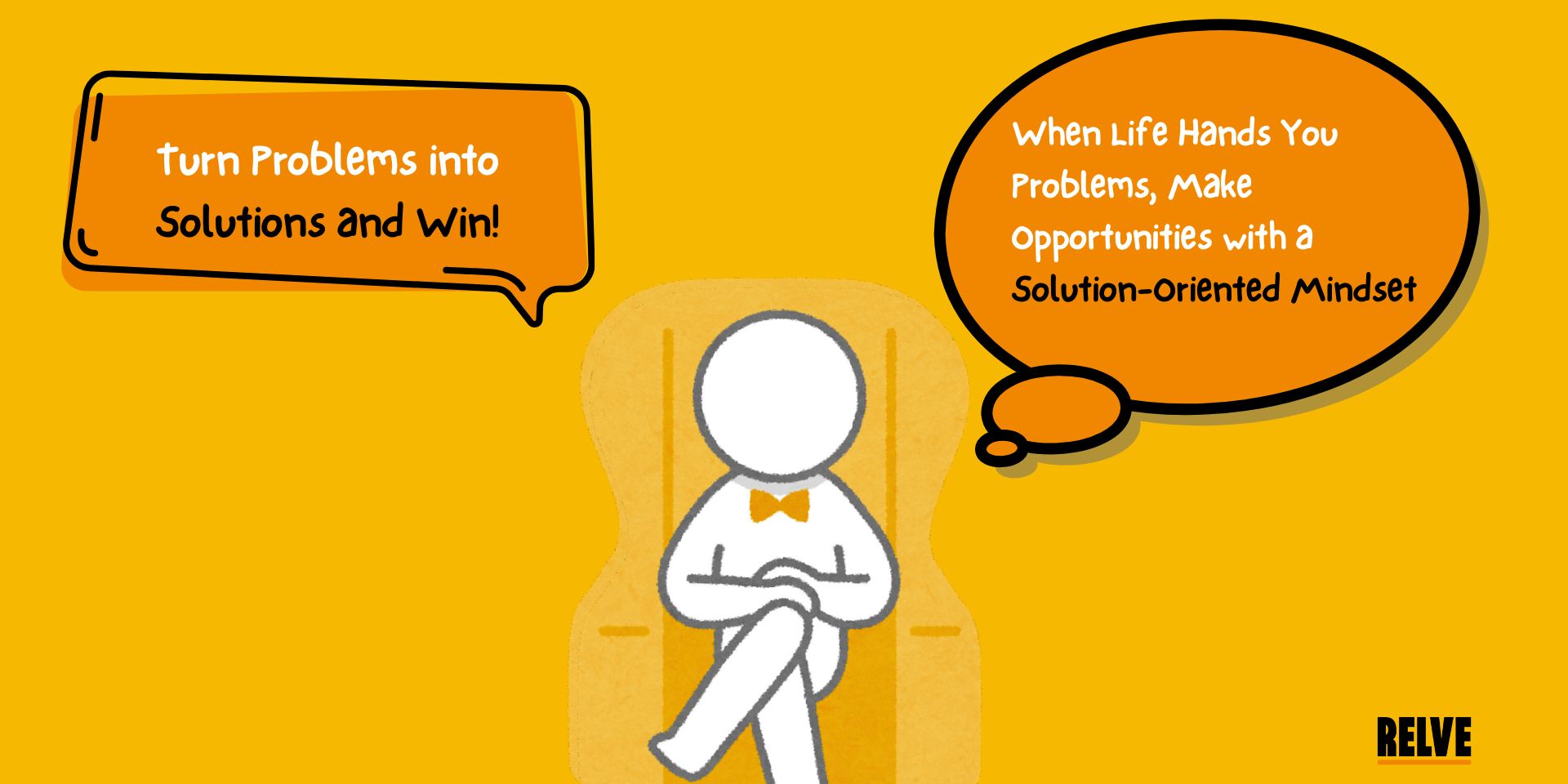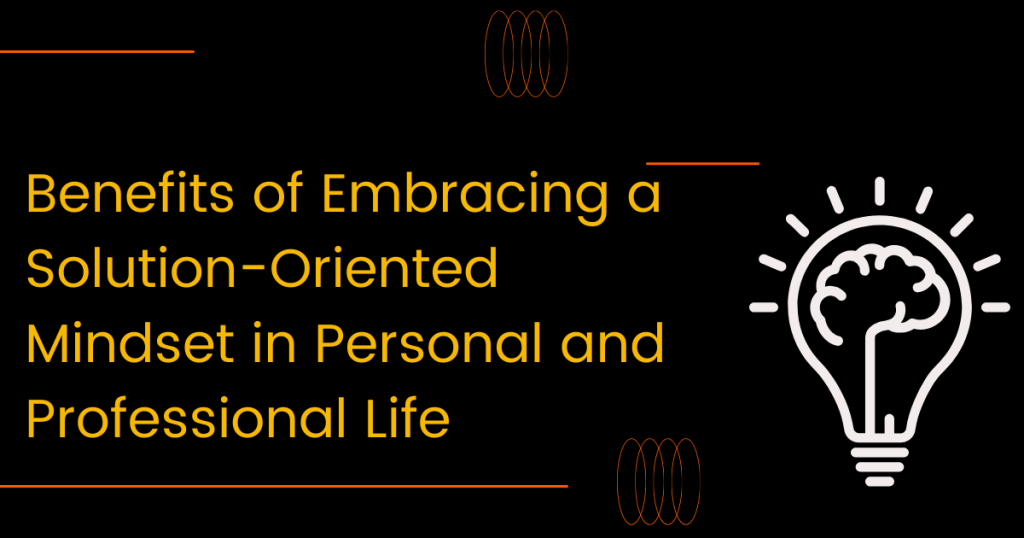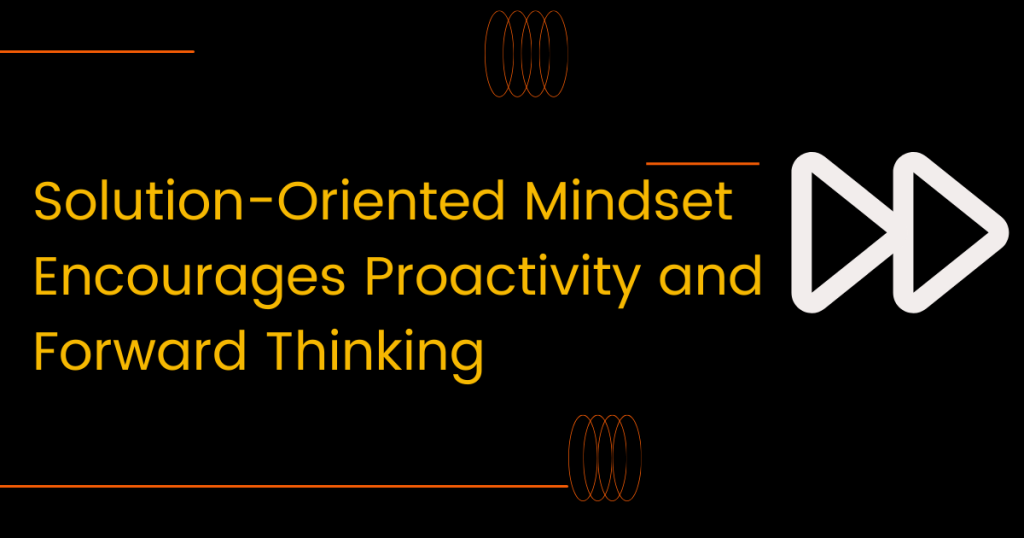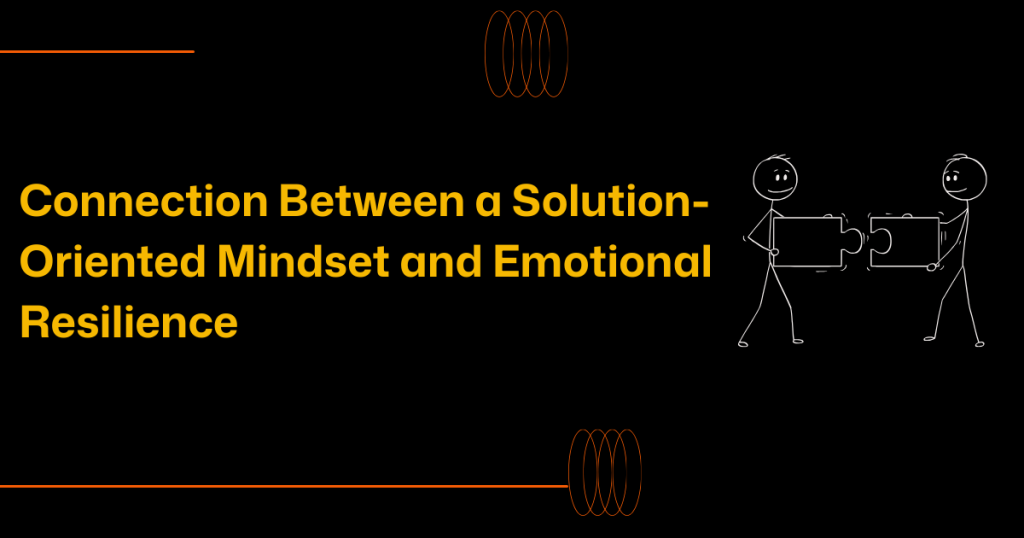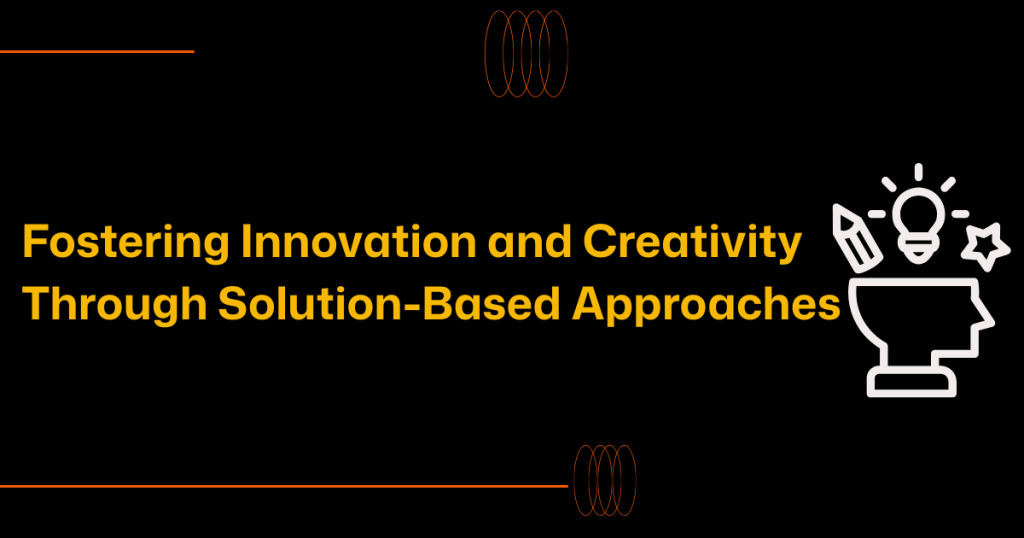We’ve all been there, staring down a seemingly insurmountable challenge, wondering where to even begin. Whether it’s a work crisis, a personal setback, or just one of those days where nothing seems to go right, the weight of problems can feel paralyzing. But what if these obstacles weren’t barriers? What if they were launchpads for growth, creativity, and even success? That’s the magic of adopting a solution-oriented mindset.
At its core, a solution-oriented mindset isn’t just about “positive thinking.” It’s about acknowledging challenges while focusing your energy on actionable solutions.
Cal Newport, Deep Work
The ability to concentrate intensely is a skill that must be trained.
With consistent effort and the right strategies, a solution driven perspective can become second nature.
What Does It Mean to Have a Solution-Oriented Mindset, and Why Is It Important for Success?
A solution-oriented mindset is a proactive way of thinking that shifts focus from obstacles to possibilities. Instead of being stuck in the “why me?” mindset, it thrives on asking, “What can I do about it?” This shift is not about denying problems but reframing them as opportunities for growth.
Think of a tightrope walker balancing high above the ground. They don’t focus on the fall; they concentrate on the next step. That’s exactly how a solution mindset works. It’s about moving forward with purpose and clarity, even when the stakes are high.
The Benefits of Embracing a Solution-Oriented Mindset in Personal and Professional Life
The Psychological Shifts Required to Embrace a Solution-Oriented Mindset
Understanding How Your Mindset Shapes Your Actions
Before adopting a solution-oriented mindset, it’s essential to recognize how deeply ingrained habits and thought patterns influence your responses to challenges. Many people default to a reactive stance, focusing on problems rather than proactively seeking solutions. This is often due to:
- Fear of the Unknown: A tendency to avoid risk because of uncertainty about the outcome.
- Cognitive Overload: Feeling overwhelmed by the magnitude of a problem, which limits creative thinking.
- Negativity Bias: A natural human inclination to focus on potential losses rather than opportunities.
How to Reprogram Your Thought Patterns for Solutions Thinking
To shift from a problem-focused approach to a solution mindset, consider these psychological adjustments:
- Practice Self-Awareness: Regularly reflect on how you approach challenges. Are your initial thoughts reactive or constructive?
- Challenge Limiting Beliefs: Replace thoughts like “This is too hard” with “What’s one step I can take toward resolving this?”
- Adopt Positive Visualization: Envision the desired outcome of a problem-solving effort. This primes your brain to seek creative solutions.
The Role of Emotional Regulation in Problem-Solving
When emotions run high, decision-making often becomes clouded. Learning to manage stress and frustration enables you to think clearly and remain focused on solutions. Techniques like mindfulness, deep breathing, or even a quick physical reset (e.g., a short walk) can help regulate your emotions during challenging times.
Recognizing When You Are Trapped in Problem-Focused Thinking and Shifting to a Solution-Oriented Approach

Identifying the Signs of a Problem-Focused Mindset
It’s easy to get stuck in a loop of negative thinking when faced with challenges. Dwelling on problems often feels productive because it mimics analysis. But over time, it leads to frustration and stagnation.
Signs of problem-focused thinking include:
- Revisiting what went wrong without discussing potential solutions.
- Over-analyzing worst-case scenarios without exploring alternatives.
- Allowing frustration to dictate your actions instead of logic and strategy.
Kim Scott, Radical Candor
If you wait too long to give guidance, everything about it gets harder. You know how it is when you kick things down the road—you notice a problem and note that you need to deal with it, but you don’t take the time to write it down.
Practical Strategies for Cultivating and Strengthening a Solution-Oriented Mindset
Reframing Challenges to See Them as Opportunities for Growth
This involves changing how you perceive challenges. Instead of viewing a mistake as a failure, see it as a lesson. For instance, losing a client might reveal areas for improvement in communication or service delivery, ultimately making you stronger in the long run.
The Power of Gratitude in Shaping a Positive Mindset
A gratitude practice doesn’t just make you happier—it shifts your focus toward what’s working, making it easier to find solutions. Start by listing three things you’re grateful for whenever a problem arises. This simple exercise can reset your mindset and open the door to solution-based thinking.
Using Structured Problem-Solving Frameworks for Clearer Thinking
When faced with a complex problem, breaking it into smaller steps can prevent overwhelm. A simple framework includes:
- Define the problem.
- Identify possible solutions.
- Evaluate and select the best option.
- Implement and assess the outcome.
Creating a Team Culture That Prioritizes and Celebrates Solution-Oriented Thinking

Empowering Team Members to Take Initiative and Ownership of Problems
A solutions-driven culture begins with leadership. By modelling problem-solving behaviour, you empower team members to approach challenges with confidence and creativity. For example:
- Delegate responsibilities and trust team members to take ownership.
- Encourage autonomy by providing resources and support, but avoid micromanaging.
Overcoming the Most Common Barriers That Prevent a Solution-Oriented Mindset

Fear of Failure as a Roadblock to Progress
Many people hesitate to adopt a solution-based mindset because they fear making mistakes. But failure is an essential part of growth. Reflecting on what went wrong and adapting is far more productive than avoiding action altogether.
The Danger of Perfectionism and Its Impact on Solution-Based Thinking
Striving for perfection often paralyzes progress. Instead of waiting for the “perfect” solution, aim for incremental improvements. Small, consistent steps often lead to the best results.
Shifting from a Fixed Mindset to a Growth-Oriented Mentality
A fixed mindset limits potential by focusing on what you can’t do. Shifting to a growth mindset opens up possibilities for learning and adaptation. This mental shift is critical for cultivating a solution-oriented mindset.
Examples of Real-World Success Stories That Showcase the Power of Solution-Oriented Thinking
NASA’s Apollo 13 Mission: A Lesson in Solutions Driven Problem-Solving
In one of history’s most famous problem-solving moments, NASA engineers worked tirelessly to bring astronauts safely back to Earth during the Apollo 13 crisis. Their ability to think creatively and collaboratively under immense pressure epitomizes solution-based thinking.
The Remote Work Revolution: A Modern-Day Transformation Through Solutions Thinking
The COVID-19 pandemic forced organizations worldwide to rethink traditional work structures. Companies that embraced a solution-oriented mindset, such as investing in digital transformation, turned a global challenge into an opportunity for long-term flexibility and growth.
The Ripple Effect of a Solution-Oriented Mindset Across Personal, Professional, and Community Life

Personal Growth Through Resilience and Determination
A solution-based mindset empowers you to face life’s challenges with grace and determination. Over time, this resilience spills over into other areas, enhancing your confidence and adaptability.
Professional Success Fueled by a Focus on Solutions
Professionals who consistently approach problems with a solution mindset stand out as leaders. They’re not only seen as reliable but also as innovative thinkers who add value to any organization.
Building a Culture of Collaboration and Shared Success Within Teams and Communities
When individuals adopt a solution-oriented mindset, it creates a culture of optimism and collaboration. This collective energy drives teams and communities toward shared success.
Turning Problems Into Opportunities Through a Solution-Oriented Mindset
Cultivating a solution-oriented mindset is more than just a skill—it’s a transformative practice that reshapes the way you perceive challenges and opportunities alike. By focusing on solutions instead of problems, you empower yourself to embrace resilience, adapt to unforeseen circumstances, and discover innovative pathways forward. This mindset not only enhances your ability to overcome individual challenges but also contributes to a larger ripple effect, enriching your personal growth, professional success, and the well-being of the communities you engage with.
Now as adults we realize that to live with courage, purpose, and connection—to be the person who we long to be—we must again be vulnerable. We must take off the armor, put down the weapons, show up, and let ourselves be seen.
Brené Brown, Dare to Lead
So, the next time you’re faced with a problem, remember: the solution is already within you. You just need to find it, embrace it, and act on it. Each small step toward a solution strengthens your confidence, sharpens your perspective, and builds a mindset primed for continuous growth. Problems may never disappear entirely, but with the right mindset, you’ll realize they don’t need to—because every challenge is simply a stepping stone toward your next big opportunity.
Take that first step. Transform your problems into possibilities, and watch as the world around you aligns with your solution-oriented approach. Your journey begins with action, courage, and the unwavering belief that every problem holds the potential for progress.
